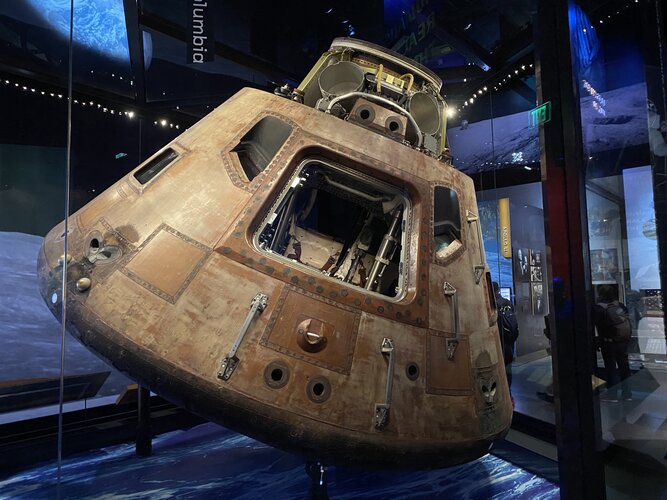- Joined
- 31 May 2009
- Messages
- 1,154
- Reaction score
- 595
The first three spacecraft studied under NASA's Apollo program designation were proposals by Martin, General Electric and Convair Astronautics (General Dynamics) in partnership with Avco.
Depicted here is the Convair Phase C lunar lander, in which the entire Apollo vehicle landed on the moon -- there was no separate LEM. Enclosed within the spacecraft is an M-2 re-entry lifting body with seating for up to five crew. This lifting body could land on any runway (though its preferred destination was Texas).
To put this NASA-funded project in proper context, it should be noted that it dates back to early 1961, before any human went into space, and before JFK made his speech about sending a man to the moon.
Shown here are photos of the manufacturer's model and inboard profile of the spacecraft. Note the four landing legs (shown in retracted position) surrounding the eight-engine cluster.
Depicted here is the Convair Phase C lunar lander, in which the entire Apollo vehicle landed on the moon -- there was no separate LEM. Enclosed within the spacecraft is an M-2 re-entry lifting body with seating for up to five crew. This lifting body could land on any runway (though its preferred destination was Texas).
To put this NASA-funded project in proper context, it should be noted that it dates back to early 1961, before any human went into space, and before JFK made his speech about sending a man to the moon.
Shown here are photos of the manufacturer's model and inboard profile of the spacecraft. Note the four landing legs (shown in retracted position) surrounding the eight-engine cluster.
















































